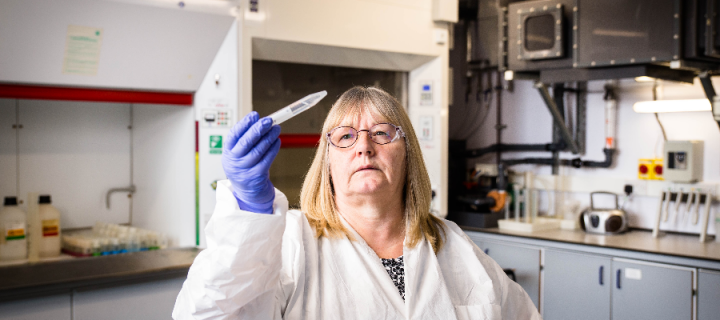Cosmogenic Nuclide Laboratory
The facility supports in-house research, as well as academic and external services in preparing samples for the measurement of terrestrial cosmogenic nuclides within rock and sediment.

Terrestrial cosmogenic nuclides form in rock minerals exposed in the upper ~2 m of Earth’s surface through interaction with cosmic radiation.
The concentration of cosmogenic nuclides in near surface rocks will increase through time until their production is matched by their losses through physical erosion and radioactive decay. Thus, the concentration of cosmogenic nuclides in rock or sediment is a balance between its exposure time and erosion rate. This knowledge can be applied in a range of settings to quantify dates and rates of Earth surface processes.
Cosmogenic nuclide concentrations are commonly used to determine:
- ‘exposure ages’ such as glacier erosion, lava flows, buried sediments and flood deposits
- ‘erosion rates’ such as rock surface erosion rates, land surface degradation rates, river incision rates and fault-slip rates
This facility is designed to make possible the measurement of terrestrial cosmogenic nuclides within rock and sediment. Here, we chemically extract cosmogenic isotopes from rock and sediment and prepare targets ready for measurement by Accelerator Mass Spectrometry (AMS) or Mass Spectrometry (MS).
The AMS or MS analyses are conducted at the Scottish Universities Environment Research Centre (SUERC) or other collaborative institutions.
Information about our facility, and the process and applications for analysis are included in our poster available for download:
Contact the Cosmogenic Nuclide Laboratory
Laboratories and equipment
Applications
Small Research Facility (SRF)
Our Cosmogenic Nuclide Laboratory is operated as a Small Research Facility (SRF).
A Small Research Facility (SRF) is a facility or service provided by the School and used for research and teaching. They are also available for use by the wider community such as external academic or commercial use. Our SRF's are available for hire or on a consultancy basis. These charges are recognised by grant funders and can therefore form part of a grant submission.

